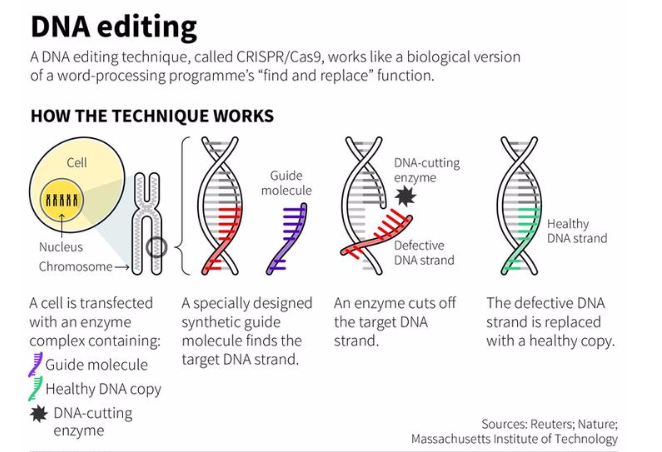
Introduction:
Intro 1:
Gene editing is a set of techniques used to modify the DNA of an organism. It allows for precise, targeted changes to the genetic material, which can include adding, removing, or altering specific DNA sequences.
Intro 2:
Gene editing is a powerful technique that allows scientists to essentially cut, paste, or rewrite the genetic code of living organisms. Imagine it like editing a document - you can insert new information, delete unwanted parts, or even fix typos. But instead of words and sentences, you're working with the DNA that determines an organism's traits.
Intro 3:
It is a way of making specific changes to the DNA of a cell or organism. This allows genetic material to be added, removed, or altered at particular locations in the genome.

It is a three-stage complex mechanism of unwinding, cleaving and rewinding of DNA to bring desirable changes in the genome of any living beings.

Working Mechanism:
1. Engineered Nuclease: Cuts the Genome at a specific place
2. Manipulating Cell’s own Repair Mechanism to Repair the Cut
3. Various Techniques: CRISPR-Cas9, ZFNs, TALENS

Comments (0)
Categories
Recent posts


Q5/ Section B, APSC Mains 2024 Essay - ...
29 Jul 2024
Satellite Town
21 Jul 2024
Q 1/Section A, APSC Mains 2024 Essay - ...
29 Jul 2024



